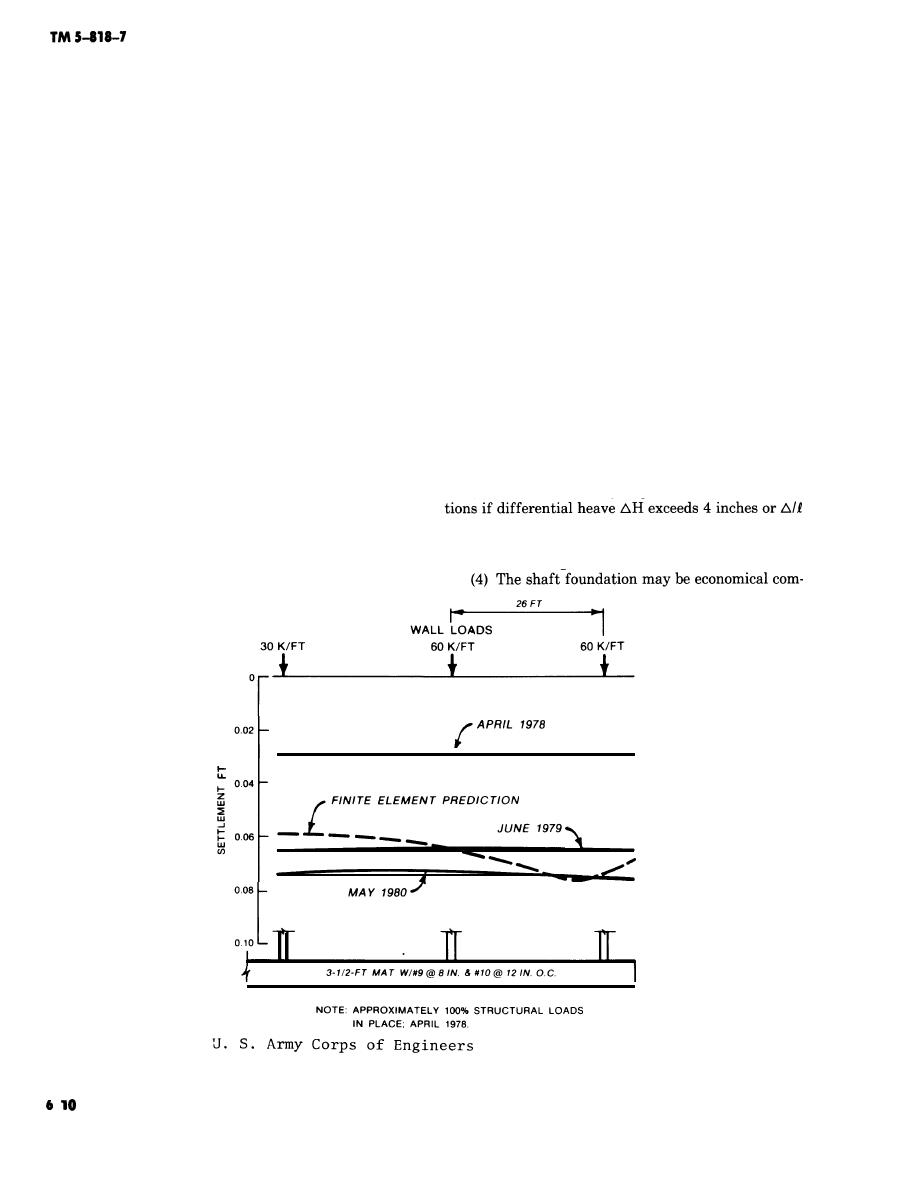
also available, but they are often burdened with hard
applications. Each of the types of piling
a. General
is appropriate depending on the location and type of
to explain local discontinuities in results, time-con-
suming programming of input data, and need of expe-
structure, ground conditions (see table 3-1 for exam-
rienced personnel to operate the program. The finite
ples), and durability. The displacement pile is usually
appropriate for marine structures. Any of the piles in
element program originally developed for analysis of
table 6-3 may be considered for land applications. Of
Port Allen and Old River Locks was applied to the
these types the bored and cast in situ concrete drilled
analysis of the Wilford Hall Hospital mat foundation
shaft is generally more economical to construct than
at Lackland Air Force Base in Texas. Figure 6-9 com-
driven piles.
pares predicted with observed movement of the 3.5-
b. Application of drilled shafts. Table 6-4 describes
foot-thick mat at Wilford Hall. Foundation soils in-
detailed applications of drilled shaft foundations in-
clude the fissured, expansive Navarro and upper Mid-
cluding advantages and disadvantages. Detailed dis-
way clay shales. These computer programs help refine
cussion of drilled shaft foundations is presented below
the design of the mat and can lead to further cost re-
because these have been most applicable to the solu-
ductions in the foundation.
tion of foundation design and construction on expan-
6-4. Deep foundations
sive clay soils.
The deep foundation provides an economical method
(1) A drilled shaft foundation maybe preferred to
for transfer of structural loads beyond (or below) un-
a mat foundation if excavating toward an adequate
bearing stratum is difficult or the excavation causes
stable (weak, compressible, and expansive) to deeper
settlement or loss of ground of adjacent property.
stable (firm, incompressible, and nonswelling) strata.
(2) A drilled shaft foundation 20 to 25 feet deep
Usually, the deep foundation is a form of a pile founda-
tends to be economically competitive with a ribbed
tion. Numerous types of pile foundations exist of
mat foundation,
which the most common forms are given in table 6-3.
(3) Drilled shafts may be preferred to mat founda-
Occasionally when the firm-bearing stratum is too
deep for the pile to bear directly on a stable stratum,
ratios exceed 1/250, Mat foundations under such con-
the foundation is designed as friction or floating piles
and supported entirely from adhesion with the sur-
ditions may tilt excessively leading to intolerable dis-
rounding soil and/or end bearing on underreamed foot-
tortion or cracking.
ings.
Figure 6-9. Settlement and deflection of a mat foundation.



 Previous Page
Previous Page
